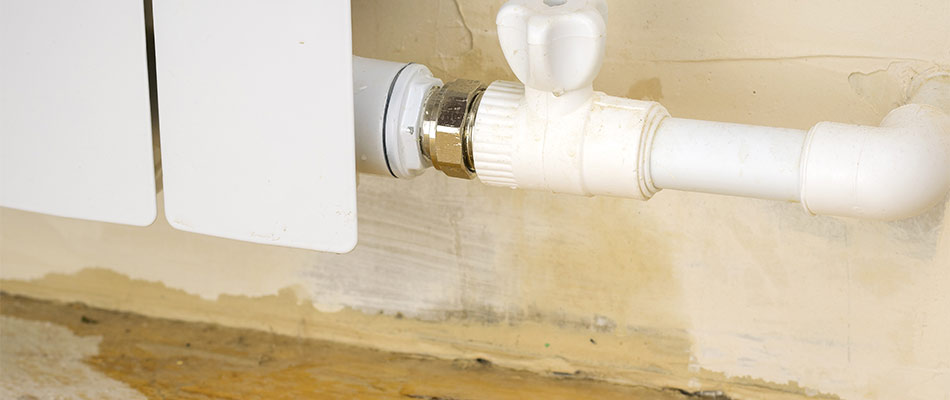Guide To Water Leakage Detection In The House
Guide To Water Leakage Detection In The House
Blog Article
They are making a number of great pointers related to Locating water leaks overall in this great article further down.

Early detection of dripping water lines can reduce a possible catastrophe. In addition to saving you money, it will certainly minimize the irritation and stress. The moment you find a leakage, calling your plumber for fixings is the best option. Some little water leakages might not be visible. Below are some hacks that help if you can not identify it with your naked eyes.
1. Examine the Water Meter
Every residence has a water meter. Examining it is a surefire manner in which aids you find leakages. For beginners, shut off all the water resources. Make sure nobody will certainly flush, use the faucet, shower, run the washing device or dish washer. From there, go to the meter and also watch if it will change. Given that no one is utilizing it, there need to be no motions. If it moves, that indicates a fast-moving leak. Also, if you spot no changes, wait an hour or more and also examine back once again. This means you may have a sluggish leakage that could also be below ground.
2. Check Water Intake
If you find sudden modifications, despite your consumption being the exact same, it suggests that you have leaks in your plumbing system. A sudden spike in your expense shows a fast-moving leak.
On the other hand, a constant boost monthly, despite having the same behaviors, shows you have a slow-moving leak that's additionally gradually rising. Call a plumber to completely examine your home, specifically if you feel a warm area on your floor with piping underneath.
3. Do a Food Coloring Examination
30% comes from bathrooms when it comes to water usage. Examination to see if they are running correctly. Decline specks of food shade in the storage tank and wait 10 minutes. There's a leak between the container as well as dish if the color in some way infiltrates your bowl during that time without flushing.
4. Asses Exterior Lines
Do not forget to check your outdoor water lines too. Should water seep out of the link, you have a loosened rubber gasket. One tiny leakage can waste tons of water as well as increase your water expense.
5. Analyze the situation as well as examine
House owners should make it a habit to check under the sink counters and even inside closets for any kind of bad odor or mold and mildew development. These two red flags indicate a leakage so prompt focus is called for. Doing routine examinations, even bi-annually, can save you from a significant trouble.
Extra importantly, if you recognize your house is currently old, keep a watchful eye on your heating systems, pipes, pipelines and so on. Check for discolorations and weakening as a lot of pipes as well as devices have a life span. They will also naturally degrade as a result of wear and tear. Don't wait for it to rise if you presume dripping water lines in your plumbing system. Call an expert plumber immediately so you do not wind up with a horrible mess in your home.
Early discovery of leaking water lines can reduce a potential catastrophe. Some little water leakages may not be visible. Examining it is a surefire means that helps you uncover leaks. One little leak can throw away bunches of water and increase your water expense.
If you believe leaking water lines in your plumbing system, don't wait for it to rise.
WARNING SIGNS OF WATER LEAKAGE BEHIND THE WALL
PERSISTENT MUSTY ODORS
As water slowly drips from a leaky pipe inside the wall, flooring and sheetrock stay damp and develop an odor similar to wet cardboard. It generates a musty smell that can help you find hidden leaks.
MOLD IN UNUSUAL AREAS
Mold usually grows in wet areas like kitchens, baths and laundry rooms. If you spot the stuff on walls or baseboards in other rooms of the house, it’s a good indicator of undetected water leaks.
STAINS THAT GROW
When mold thrives around a leaky pipe, it sometimes takes hold on the inside surface of the affected wall. A growing stain on otherwise clean sheetrock is often your sign of a hidden plumbing problem.
PEELING OR BUBBLING WALLPAPER / PAINT
This clue is easy to miss in rooms that don’t get much use. When you see wallpaper separating along seams or paint bubbling or flaking off the wall, blame sheetrock that stays wet because of an undetected leak.
BUCKLED CEILINGS AND STAINED FLOORS
If ceilings or floors in bathrooms, kitchens or laundry areas develop structural problems, don’t rule out constant damp inside the walls. Wet sheetrock can affect adjacent framing, flooring and ceilings.
https://www.servicemasterbyzaba.com/blog/how-to-detect-water-leakage-in-walls/

I hope you enjoyed our post on Hacks to detect leaks. Thanks so much for taking time to browse our content. Be sure to take the opportunity to promote this blog post if you liked it. I appreciate reading our article about Finding hidden leaks.
Report this page